A Beginner's Guide to a Ketogenic Diet
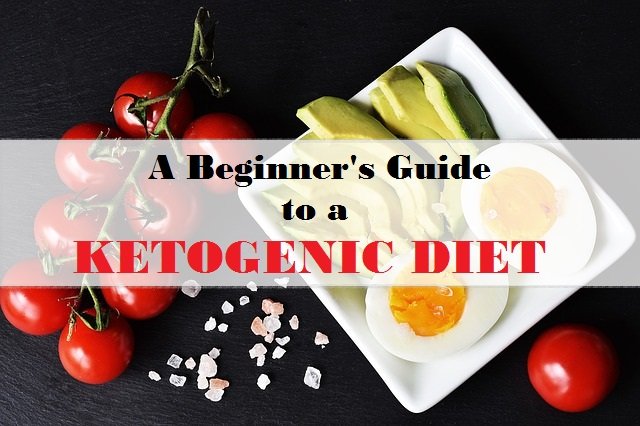
Would you believe it if I said that the keto diet wasn't designed as a weight-loss diet but as a diet to help people that suffer from seizure disorders?
No, really, the diet produces chemical products called decanoic acids which may help reduce and minimize seizures. But then people started noticing that this diet can help them lose weight.
The ketogenic diet or as it is also known as "keto diet" is a very low-carbohydrates, high-fat diet that offers many health benefits. It turns the body into a fat burning machine. This diet has been tried and tested by millions of peoples and it has been proven to help in weight loss, along with many benefits for health and performance.
In here you will learn all about the keto diet.
✵What is a Ketogenic Diet✵
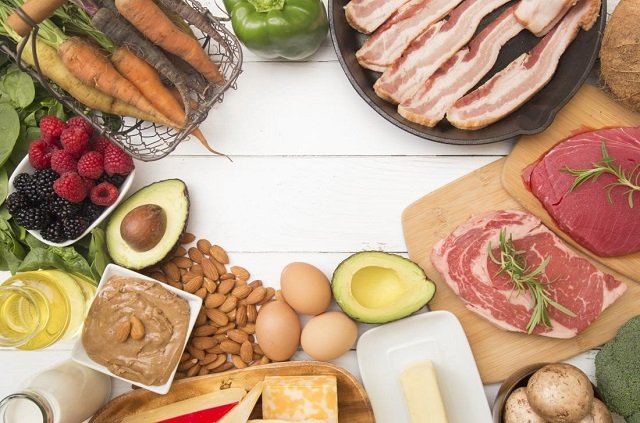
The ketogenic diet is a low-carb, high-fat diet, this diet is all about minimizing the number of carbs eaten and increasing the number of fats eaten to make your body use your fats as a source of energy, allowing it to become a fat burning machine. It is a diet plan that is similar to Atkins diet and other low-carb diets out there.
By drastically reducing the carbohydrates taken in and replacing it with fat, after about two to seven days of following this routine, your body will enter into a metabolic state called ketosis.
Ketosis is the metabolic state that your body enters into when there are not enough carbs for it to use as energy. By entering this state, the body will soon produce small fuel molecules called ketones.
✵What are Ketones✵
Ketones, also known as "ketone bodies", are produced when you eat low-carb foods and small amounts of protein. These byproducts are produced by breaking down fat for energy when carbohydrates are low in supply.
By reducing carbs the available glucose, which is the main source of energy for the body, falls which cause your glycogen level to fall as well. This lowers your blood sugar and insulin which causes the body to look for alternative sources of energy, and this is where fats come in.
Fat cells will soon produce fatty acids, which will travel into the liver, which will break it down in a process known as beta-oxidation, soon ketones will be produced by the liver which will be used as a fuel throughout the body and the brain. This process is known as ketosis.
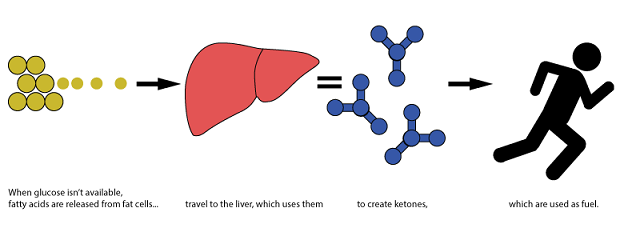
✵What to Eat and What to Avoid on a Ketogenic Diet ✵
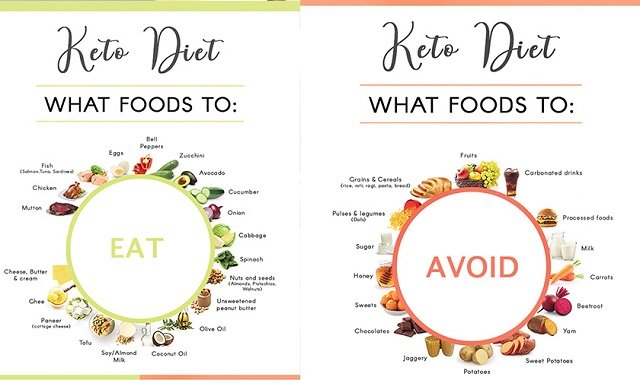
For beginners in the keto diet, eating low-carb foods can be challenging, so here is a list of foods that you are allowed to eat and foods that you should avoid. In a keto diet, your meal should comprise around 75% fats, 25% protein, and 5% carbs.
With 75% of your calory intake coming from fats, the remaining calories will come from protein and carbs. For protein, about 1 gram per kilogram of the body weight is needed. As for carbs around 20 to 50 grams of net carbs are needed to maintain ketosis.
This is a general guideline of foods allowed to eat and foods that should be avoided in a keto diet. I hope this can help you make the right choices by yourself.
✵Foods to eat
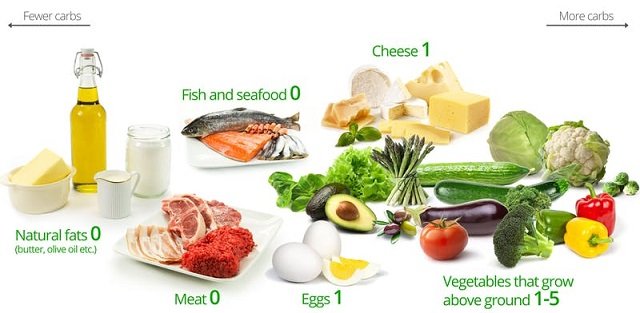
- Healthy Fats and natural Oils (e.g. avocado oil, MCT oil, olive oil, butter, and coconut oil)
- Protein (e.g. preferably grass-fed beef, dark meat chicken, whole eggs, duck, pork, lamb, sheep, goat, goose, and turkey)
- Fatty Fish (e.g. salmon, mackerel, herring, albacore tuna, lake trout, and sardines)
- Dairy Products (e.g. full-fat cream and full-fat sour cream)
- Unprocessed cheese (e.g. mozzarella, mascarpone, cheddar, blue cheese, feta, and brie)
- Low-carb to no carb vegetables (e.g. avocado, leafy greens, cauliflower, zucchini, artichokes, celery, asparagus, bell peppers, carrots, cucumber, mushrooms and more)
- Nuts and seeds (e.g. walnuts, almonds, flax seeds, hazelnuts, pecans, and more)
- Natural sweeteners (e.g. stevia, erythritol, and xylitol)
- Sugar-free drinks (e.g. water, plain tea, plain coffee, and almond milk)
- Herbs and spices (preferably only in small amounts)
✵Foods to avoid

- Sugary food (e.g. soda, fruit juice, smoothies, cake, ice cream, candy, and more)
- Grains or starches (wheat-based products, rice, pasta, cereal, and more)
- Fruit, all fruit, except small portions of berries like strawberries
- Beans or legumes (e.g. peas, kidney beans, lentils, chickpeas, and more)
- Unhealthy fats (e.g. Margarine, artificial trans fats, mayonnaise, and more)
- High-carb vegetables (e.g. root vegetables, tubers, corn, raisins, and more)
- Sweeteners (e.g. white and brown sugars, maple syrup, honey, artificial sweeteners, agave syrup, high-fructose corn syrup, and more)
- Condiments that contains sugar and unhealthy fats.
✵Sample meal plan
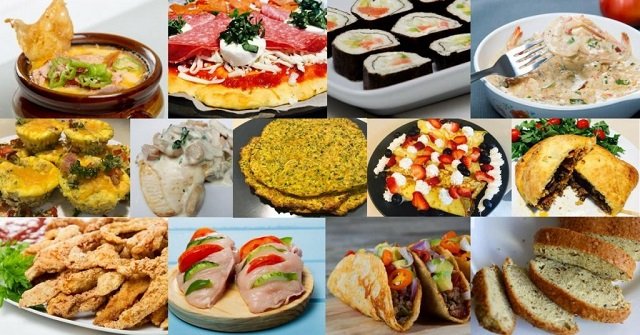
- Breakfast: Scrambled eggs in butter on a bed of lettuce topped with avocado.
- Snack: Sunflower seeds.
- Lunch: Spinach salad with grilled salmon.
- Snack: Celery and pepper strips dipped in guacamole.
- Dinner: Pork chop with cauliflower mash and red cabbage slaw.
✵The Pros and Cons of The Ketogenic Diet✵
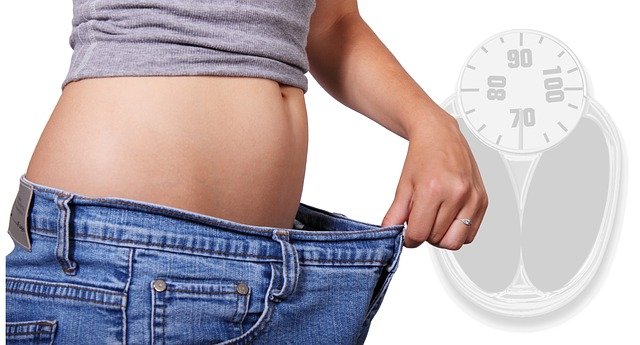
Keto diet offers similar benefits to other low-carb diets, but it is more liberal in the application and is more effective. It maximizes the benefits of a low-carb diet and Super-charging it for better results.
✵The benefits of the ketogenic diet
- It can help you lose weight in a short amount of time.
- It can help you control your appetite.
- Control your blood sugar level.
- Prevents diabetes.
- Treats type 2 diabetes.
- Improves health by controlling cholesterol levels, blood pressure, insulin levels, and blood sugar levels.
- Prevents heart problems.
- Helps recovery from brain injuries.
- Treats Polycystic ovary syndrome.
- Improves stomach condition.
- Helps control epilepsy.
✵Possible benefits of the ketogenic diet
- Less acne.
- Less heartburn.
- Prevents Alzheimer's.
- Fewer Migraine Attacks.
- Lessens sugar cravings.
- Increases in longevity.
- Treat or reduce cancer.
- Treats Parkinson's disease.
✵Possible side effects of the ketogenic diet
When starting the keto diet, your body will not be ready right away. During this transition period, due to dehydration and lack of micronutrients, possible side effects might occur, most probably in the first week or so and is usually only temporary. Here are some possible side effects of keto diet

- Keto flu, this can include poor energy and mental function, increased hunger, sleep issues, nausea, digestive discomfort and decreased physical performance.
- Keto diet is diuretic.
- Causes dehydration which can lead to various problems (e.g. cramps, constipation, and heart palpitations)
- Hair loss.
- Keto rash.
✵Final Thoughts✵
If you want to lose weight and improve your health condition, then the ketogenic diet is an effective low-carb diet, that can be great for people looking to lose weight, diabetic, and improve their metabolism. But it cannot be said to be the right diet for everyone, most especially for athletes and those looking to become more muscular.
That being said, the ketogenic diet is an amazing diet that has been proven through research and clinical trials, to help reduce weight effectively and quickly, most especially those that stick with it in the long term.
Thank you for taking your time and reading this! Have a good day!
Note: This was first posted on my bitLanders page. If you're not a Bitlanders member yet, sign up and click here. You can earn $$$ as you post.